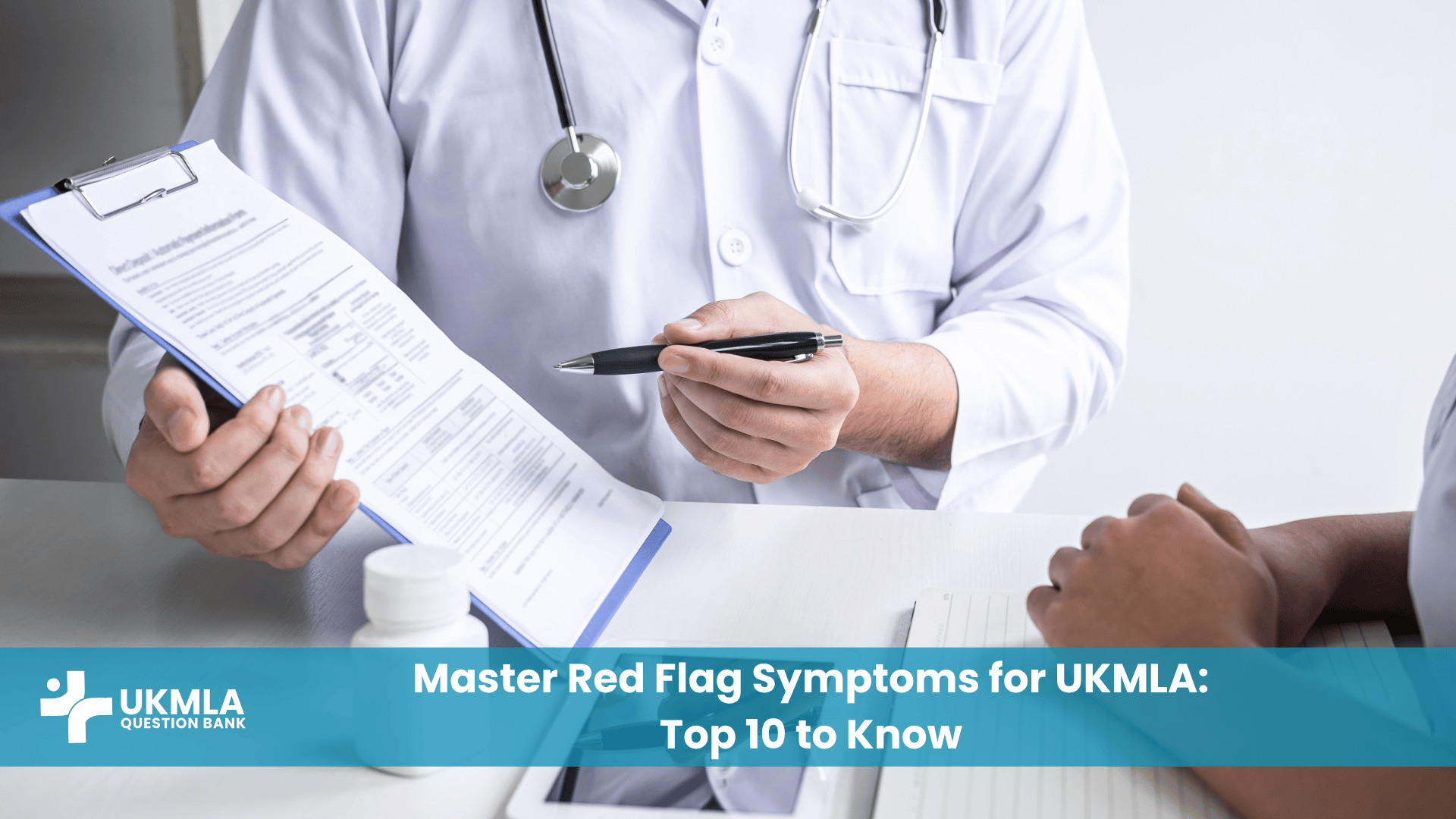Introduction
A deep dive into the UKMLA content map and questions is a vital exercise for any candidate aiming for a high score. While our broader guide explains how to use all official GMC resources, this article provides a forensic, practical analysis of the two most important documents provided by the General Medical Council. These are not just supplementary materials; they are the very blueprint and language of the exam.
Mastering these resources allows you to get inside the minds of the exam setters. The Content Map tells you exactly what you can be tested on, while the Sample Questions show you how you will be tested. By learning to use these tools in a sophisticated, integrated way, you can transform your study from a passive review of topics into a targeted and strategic mission to master the exam itself.
Table of Contents
TogglePart 1: A Forensic Analysis of the UKMLA Content Map
The UKMLA Content Map is the single most important document for your preparation. It is the official syllabus published by the GMC, and it forms the entire basis of the AKT and CPSA exams. You can always find the latest version on the GMC’s main Medical Licensing Assessment page.
Understanding the Blueprint: The 6 Domains and 24 Clinical Presentations
The map is structured into two main areas that intersect to define the scope of the exam. Understanding both is essential. A detailed look at this structure can be found in our guide to the UKMLA content map blueprint.
The Six Domains: These represent the professional skills and capabilities required of a Foundation Year 1 (F1) doctor in the UK. They are the “how” of medical practice.
Professionalism and patient safety: This covers ethics, law, professional values, and ensuring patient safety is paramount.
Prescribing: This assesses your ability to prescribe medications safely, effectively, and rationally.
Teamwork and communication: This domain focuses on your ability to communicate clearly with patients, families, and colleagues.
Data interpretation: This tests your ability to interpret common investigations like blood tests, ECGs, and imaging.
Clinical skills: This includes history taking, physical examination, and practical procedures.
Emergency care: This assesses your ability to recognize and provide immediate management for acute medical emergencies.
The Twenty-Four Clinical Presentations: These are the common patient scenarios that form the basis of the clinical questions. They are the “what” of medical practice. They cover the breadth of medicine, from “a patient with chest pain” and “a patient with a rash” to “a patient with abnormal blood results” and “a patient with a long-term condition.” Every clinical question in the UKMLA is based on one of these presentations.
A 3-Step Strategy for Using the Map as an Active Study Tool
Simply reading the Content Map is not enough. To truly leverage its power, you must use it as an active, dynamic tool throughout your preparation. This transforms it from a static document into the central dashboard for your entire revision campaign.
Table 1: 3-Step Content Map Strategy
| Step | Action | Goal |
| 1. Checklist | Rate your confidence (Red/Amber/Green) for every item on the Content Map. | Get an honest baseline of your strengths and weaknesses. |
| 2. Prioritize | Build your initial study plan around your “Red” and “Amber” areas. | Ensure you are focusing your limited time on the highest-yield topics for you. |
| 3. Guide | Tag incorrect QBank questions to Content Map areas. | Use your QBank to systematically turn your weaknesses into strengths. |
This active approach ensures that every study session is targeted, relevant, and directly addresses a known weakness. It stops you from wasting time revising subjects you already know well and forces you to confront the areas that will make the biggest difference to your score.
Part 2: Deconstructing the Official UKMLA Sample Questions
The GMC provides a limited number of official sample questions. While there are not enough to act as a primary question bank, their value is immense. They are a direct communication from the exam setters about what they expect from you.
What the Question Style Reveals About the AKT
The official sample questions demonstrate that the UKMLA AKT is not a test of simple fact recall. It is a test of clinical reasoning and application. Notice the following:
Long Vignettes: Questions are often based on detailed clinical scenarios, requiring you to identify the most important information from a larger story. This tests your ability to sift through data and focus on what is clinically significant.
Data Interpretation: Many questions will include lab results, ECGs, or imaging findings that you must interpret to arrive at the correct answer. This emphasizes the importance of practical skills over theoretical knowledge.
Focus on “Next Steps”: A common question format is “What is the most appropriate next step in management?” or “What is the most likely diagnosis?”. This tests your ability to make safe and logical clinical decisions at the level of a newly qualified F1 doctor.
Understanding this style is crucial. It shows that your preparation must focus not just on memorizing facts, but on practicing their application, highlighting why high-quality UKMLA MCQs are crucial.
A Worked Example: Identifying Keywords, Clinical Reasoning, and Distractors
Let’s imagine a sample question about a patient with chest pain.
The Vignette: A 60-year-old man presents with central, crushing chest pain. An ECG shows ST elevation in leads II, III, and aVF.
The Question: What is the most appropriate initial management?
The Options: Aspirin, Morphine, GTN spray, Coronary Angiography, Oxygen.
Deconstruction:
Keywords: “crushing chest pain,” “ST elevation in II, III, aVF” (inferior STEMI).
Clinical Reasoning: This is an acute STEMI. The immediate management priority is to give aspirin and prepare for reperfusion therapy (angiography).
Distractors: Morphine and GTN are also used in ACS, but aspirin is the first and most critical medication. Oxygen is only indicated if the patient is hypoxic. Coronary angiography is the definitive treatment, but not the initial management step you would take immediately.
By breaking down the official questions in this way, you train yourself to spot these patterns, making you faster and more accurate when you are working through a larger question bank.
Integrating the ukmla content map and questions: A Unified Strategy
The true power of these resources comes when you use them together to guide your study.
Using the Map to Guide Your Weak-Area Practice in a QBank
Your analysis of the Content Map tells you what to study. For example, if you’ve identified “a patient with a headache” as a weak area, you should then go to your primary question bank and do all the questions tagged with “headache” or “neurology.” This targeted approach is far more efficient than doing random blocks of questions. This is the core principle of how to use a UKMLA question bank effectively.
How the Sample Questions Should Inform Your Exam Technique
Your analysis of the sample questions tells you how to study. If you notice that many sample questions require you to interpret lab values to get the answer, it signals that you need to spend more time practicing this specific skill. If you find the question stems are long, it tells you that you need to practice reading quickly and efficiently to manage your time. Let the official questions guide the way you practice.
Key Principle: The Content Map is your ‘what,’ and the Sample Questions are your ‘how.’ Use both to create a preparation strategy that is both comprehensive and highly specific to the demands of the UKMLA.
Frequently Asked Questions (FAQ) about the UKMLA Content Map & Sample Questions
Yes, it is the official syllabus provided by the GMC. If a clinical presentation is not on the map, it is highly unlikely to be the main focus of a question.
The GMC states they are “representative” of the questions in the exam. They are created by the same teams and go through the same quality assurance process, making them the most accurate examples available.
The map is based on clinical presentations, not isolated topics. A topic like “sarcoidosis” might not be listed, but it could appear in the context of “a breathless patient” or “a patient with a rash.” You should always be guided by the presentations on the map.
The number can change as they update their resources. You should always check the main GMC MLA website for the latest set of questions. The number is small, so their value is in detailed analysis, not volume.
Yes, the GMC provides the correct answers and a brief explanation or rationale for each sample question, which is crucial for your analysis.
No, the same Content Map covers both the AKT and the CPSA. The “Domains” section of the map (e.g., professionalism, communication) is particularly relevant to the skills tested in the CPSA.
Do not use them as a simple test. Treat them like a precious resource. Dedicate a full study session to deconstructing just a handful of them. Analyze the vignette, the question, the correct answer, and all the incorrect distractors.
Yes, the principles of “Good Medical Practice” are the foundation of the “Professionalism and patient safety” domain within the Content Map. For any ethics or professionalism question, you should refer to the main Good Medical Practice guidance.
No. The map tells you what topics to study, but it doesn’t contain the clinical knowledge itself. You need to use textbooks and question banks to learn the topics listed on the map.
The GMC may review and update the map periodically. It’s good practice to check their website once every few months during your preparation to ensure you are working from the most current version.
Conclusion
While the market for UKMLA preparation is vast, your journey must begin with the official resources provided by the GMC. The Content Map and the official Sample Questions are the “source code” for the exam, offering unparalleled insight into the minds of the people who will be assessing you. They provide the framework and the context for all your other study efforts.
By using the Content Map as your personal curriculum and the sample questions as your guide to the required style of clinical reasoning, you can ensure your preparation is targeted, efficient, and perfectly aligned with the demands of the UKMLA. When you integrate these tools into your daily practice with a high-quality question bank, you create a powerful, synergistic study system that builds a solid foundation for success.



